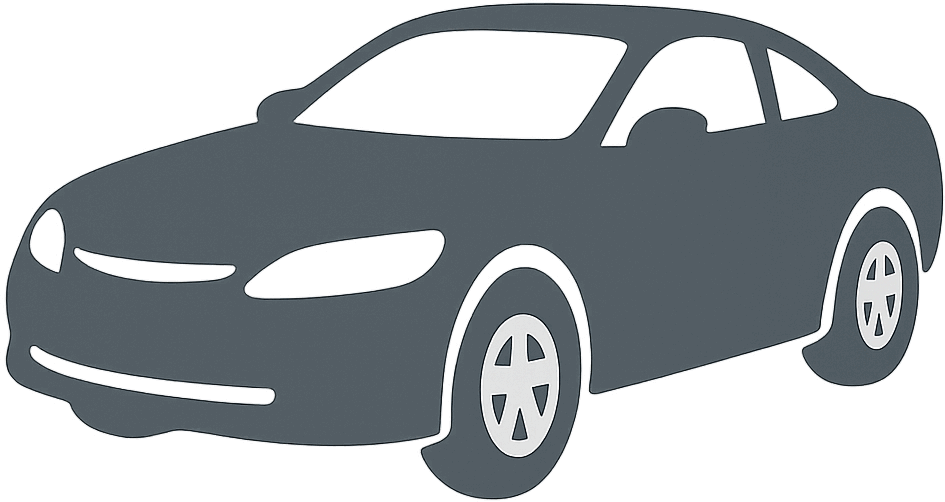 1953 DeSoto Powermaster Six Club Coupe Dimensions, Size & Specs
1953 DeSoto Powermaster Six Club Coupe Dimensions, Size & Specs
Measurements of the 1953 DeSoto Powermaster Six Club Coupe, engineered for optimal performance and comfort
| Dimensions | |
|---|---|
| Length: | 5420-5448 mm213.4-214.5 in17.8-17.9 ft |
| Width: | 1963-1969 mm77.3-77.5 in6.4-6.5 ft |
| Height: | 1588-1632 mm62.5-64.3 in5.2-5.4 ft |
| Ground Clearance: | 178 mm7.0 in0.6 ft |
The 1953 DeSoto Powermaster Six Club Coupe, produced between 1952 and 1954, represents a distinctive classic American coupe of the early 1950s with elegant styling and solid dimensions. This vehicle measures approximately 5420 to 5448 mm (213.4 to 214.4 inches) in length, offering a spacious and commanding presence on the road. Its width ranges from 1963 to 1969 mm (77.3 to 77.6 inches), providing a wide stance that contributes to stable handling and visual appeal. The height of the Powermaster Six Club Coupe spans from 1588 to 1632 mm (62.5 to 64.3 inches), reflecting the coupe’s streamlined yet robust design typical of the era. With a ride height (ground clearance) of 178 mm (7.0 inches), the vehicle balances ground clearance sufficient for typical road conditions of its time while maintaining a sleek profile. The Powermaster Six was appreciated for its six-cylinder engine configuration, blending performance and efficiency in a stylish package. As a coupe, it catered to drivers seeking a combination of sporty flair and comfort. The substantial dimensions of this car underscore its role as a full-sized automotive contender during the period, making it a noteworthy subject for classic car enthusiasts interested in vehicular size comparison and historic American car design. Its broad measurements make it stand out amongst peers while ensuring enough cabin space without compromising on classic coupe aesthetics.
Discover the standout features that make the 1953 DeSoto Powermaster Six Club Coupe a leader in its class
Have a question? Please check our knowledgebase first.
The 1953 DeSoto Powermaster Six Club Coupe measures between 5420 mm to 5448 mm (213.4 to 214.6 inches) in length, offering a comfortable size typical of American coupes of its era. Its width ranges from 1963 mm to 1969 mm (77.3 to 77.5 inches), providing a broad and stable stance on the road. The height varies between 1588 mm and 1632 mm (62.5 to 64.3 inches), which balances a sleek coupe design with adequate headroom. These dimensions ensure that the Powermaster Six Club Coupe presents a stately, yet practical size for driving and parking.
Standard garages typically have a width of around 2.4 to 2.7 meters (8 to 9 feet) and a height clearance of approximately 2.1 to 2.4 meters (7 to 8 feet). The 1953 DeSoto Powermaster Six Club Coupe's width of approximately 1.96 to 1.97 meters (77.3 to 77.5 inches) and height ranging from 1.59 to 1.63 meters (62.5 to 64.3 inches) means it fits comfortably within the width and height limits of most standard garages. Its length of just over 5.4 meters (about 17.8 feet), while long, is still manageable for standard garage lengths that usually allow for at least 5.5 to 6 meters (18 to 20 feet). As such, parking this classic coupe in a typical home garage should pose no issues.
The width of the 1953 DeSoto Powermaster Six Club Coupe ranges from 1963 mm to 1969 mm (77.3 to 77.5 inches), which is fairly wide for its time and even comparable to many modern coupes. Most modern coupes commonly measure between 1,800 mm and 1,950 mm (71 to 77 inches) in width, meaning the Powermaster Six sits comfortably within this range and offers a broad cabin space. This generous width contributes not only to the vehicle's aesthetic presence but also to interior comfort, providing wide seating space and a stable driving experience.
The 1953 DeSoto Powermaster Six Club Coupe features a ground clearance of 178 mm (7 inches). This clearance is typical for mid-20th century cars and provides a good balance between ride comfort and the ability to handle uneven roads or minor obstacles without scraping the car's low bodywork. It reflects the car's design priorities of combining a smooth, comfortable ride with sufficient practicality for daily use, though it is lower than many modern SUVs and trucks that feature higher ground clearances.
With a height ranging from 1588 mm to 1632 mm (62.5 to 64.3 inches), the 1953 DeSoto Powermaster Six Club Coupe offers reasonable headroom for a coupe from its era. While coupes typically have slightly less interior height than sedans, this coupe's dimensions allow comfortable seating for most adults without feeling too cramped. The roofline combines style and function, providing enough space for occupants while maintaining the distinctive low-slung coupe silhouette popular in the early 1950s.
The Powermaster Six Club Coupe, produced between 1952 and 1954, retained much of its predecessor's large and imposing stature but featured subtle refinements in dimensions and design. Compared to earlier DeSoto models of the late 1940s and early 1950s, the Powermaster's length, at around 5420 to 5448 mm (213.4 to 214.6 inches), was roughly similar but optimized in terms of styling to appear sleek and modern. The width increased slightly to accommodate more spacious interiors, settling near 1963 to 1969 mm (77.3 to 77.5 inches). Height variations reflect design tweaks that balanced aesthetic appeal with comfort. Overall, this generation emphasized more refined styling and maintained the large coupe size that appealed to American buyers seeking luxury and presence during the early 1950s.
The 1953 DeSoto Powermaster Six Club Coupe's dimensions placed it firmly in the full-size coupe segment of the early 1950s. Its length of roughly 5.42 to 5.45 meters (213.4 to 214.6 inches) and width near 1.96 meters (77.3 inches) made it comparable to cars like the Chevrolet Bel Air and the Ford Customline coupes of the same era. While it might not have been the longest or widest, it offered competitive interior space and road presence. The Powermaster’s combination of size and classic styling appealed to buyers wanting a substantial and stylish American coupe with the smooth performance of a six-cylinder engine.
While exact weights may vary slightly depending on specific configurations, the 1953 DeSoto Powermaster Six Club Coupe typically weighed around 1,800 to 1,900 kilograms (approximately 4,000 to 4,200 pounds). This weight is consistent with full-size American cars of the era, which featured robust steel construction and heavy components. The considerable curb weight contributed to ride stability and a smooth, planted driving feel, though it also impacted fuel economy. This level of heft was typical and expected for a luxury coupe designed for comfort and presence on the road.
The 1953 DeSoto Powermaster Six Club Coupe was equipped primarily with an inline six-cylinder engine, consistent with its 'PowerMaster Six' designation. This engine offered a balance between power and efficiency for the period, delivering reliable performance suited to the vehicle’s size and weight. Although not a high-performance powerhouse, the six-cylinder provided smooth acceleration and dependable torque for cruising American roads. This engine choice marked DeSoto's commitment to delivering reasonable power with economy during the early 1950s, catering to buyers seeking both comfort and adequate performance in their coupes.
The 1953 DeSoto Powermaster Six Club Coupe featured spacious interior dimensions, typical of full-size American cars in the early 1950s. Its width of approximately 1963 to 1969 mm (77.3 to 77.5 inches) allowed for generous cabin room, providing comfortable seating for up to five passengers. Compared to similar coupes like the Chevrolet Bel Air or Ford Customline, the Powermaster offered competitive legroom and headroom, with thoughtful interior appointments reflecting DeSoto's positioning as a premium marque. The roomy interior, coupled with a smooth ride, made it desirable for drivers seeking both style and comfort in a classic 1950s package.
